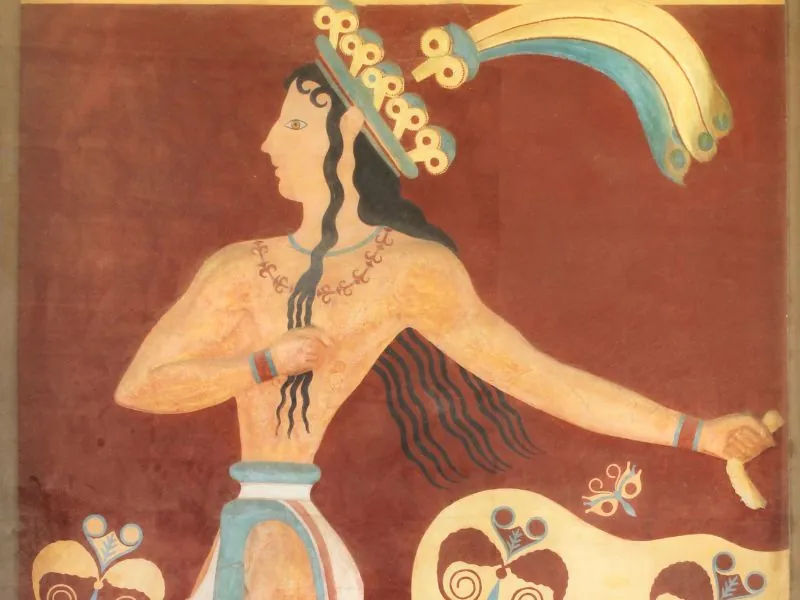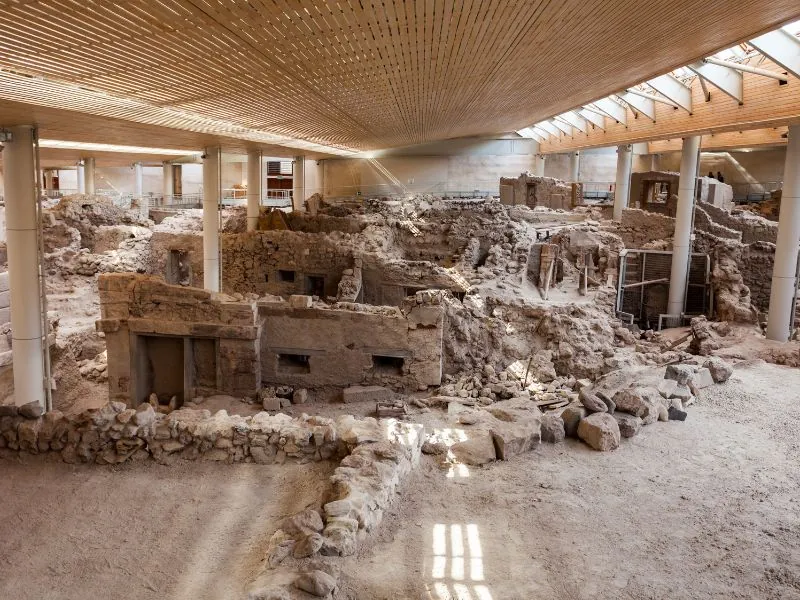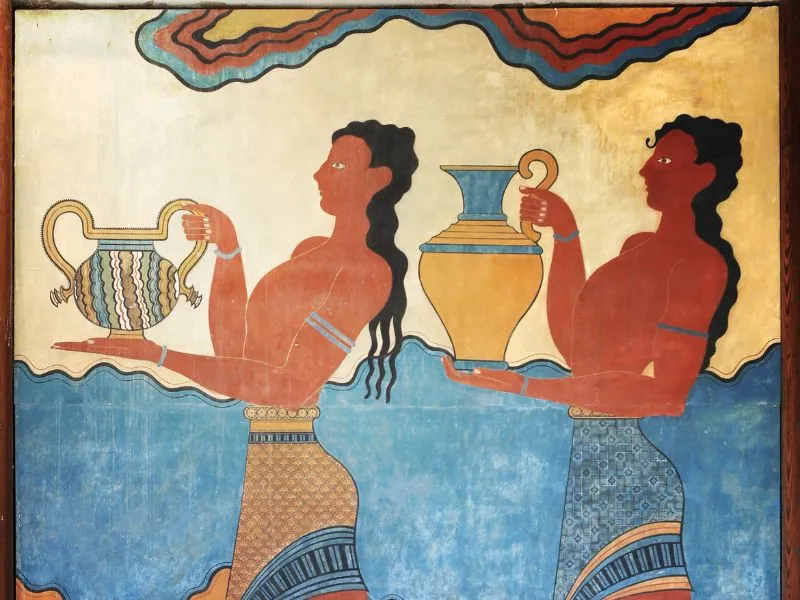Table of Contents
Introduction
Long before modern Santorini’s whitewashed houses and cliffside sunsets captivated the world, Akrotiri stood as a vibrant bridge between the Cyclades and the mighty Minoan civilization of Crete.
The city’s strategic location and cultural sophistication reveal a profound connection with Minoan Crete, making Akrotiri a key player in the Bronze Age Aegean.
Uncovering this relationship helps us understand how Akrotiri thrived as a cosmopolitan center of trade, innovation, and artistic achievement, blending local and Minoan influences into a unique cultural tapestry that fascinated ancient travelers and continues to inspire archaeologists today.
The Strategic Location of Akrotiri

Akrotiri’s placement in the southern Aegean was no accident. The city lay at the maritime crossroads between Crete, the Greek mainland, the Cyclades, and the Eastern Mediterranean. This prime location allowed Akrotiri’s merchants to facilitate the exchange of a wide range of goods, including olive oil, metals, textiles, spices, and finely crafted pottery.
Ships traveling from Crete could reach Akrotiri with relative ease, turning the city into an essential stop for traders navigating the region’s lucrative sea routes. The thriving harbor, evidenced by storerooms packed with imported objects, demonstrates that Akrotiri was more than a settlement—it was a dynamic hub connecting diverse cultures and economies.
Architectural and Artistic Parallels

A striking element of connection of Akrotiri with Minoan Civilization lies in its architecture and art.
Many of the city’s multi-story buildings feature architectural techniques remarkably similar to those in Minoan Crete, such as light wells that allowed sunlight to illuminate interiors, wooden columns that supported upper floors, and open floor plans designed for both comfort and social interaction.
These features reflect a sophisticated understanding of urban design and construction. Meanwhile, the frescoes adorning Akrotiri’s walls bear undeniable similarities to those found at Knossos and other major Minoan centers.
Dolphins, lilies, monkeys, and ceremonial processions appear frequently, suggesting shared artistic conventions or perhaps traveling artists spreading a unified visual language.
Even the decorative motifs on pottery unearthed in Akrotiri, including spirals, marine life, and abstract patterns, closely resemble Minoan examples, providing tangible evidence of artistic exchange.
Cultural and Religious Influences
Beyond trade and art, Akrotiri absorbed key aspects of Minoan culture, particularly in religion and social customs. Figurines, frescoes, and altars discovered in the city reveal rituals and symbols aligned with Minoan practices, including depictions of female deities, sacred animals like bulls, and ceremonial scenes.
These findings suggest not only a shared belief system but also the possibility of direct contact with Minoan priests or religious emissaries.Private shrines inside Akrotiri’s homes indicate that religious practices permeated daily life, and the presence of communal spaces hints at organized ceremonies similar to those in Crete.
This shared spiritual landscape strengthened cultural ties between the two societies and demonstrates how religion played a central role in maintaining connections across the Aegean.
A Unique Cycladic-Minoan Synthesis

While the connection of Akrotiri with Minoan Civilization are undeniable, Akrotiri’s material culture also reveals its Cycladic roots. The city blended local traditions with Minoan elements, creating a hybrid identity that showcased both innovation and cultural pride.
Akrotirians adopted advanced Minoan techniques in pottery-making, architecture, and fresco painting, but infused them with distinct Cycladic aesthetics, such as geometric designs and maritime themes reflecting their close relationship with the sea.
This synthesis of styles produced unique artworks and everyday objects that reflected a society unafraid to adapt and innovate. It enriched Akrotiri’s cultural landscape and turned the city into a magnet for ideas, goods, and talents from across the Mediterranean.
Conclusion
connection of Akrotiri with Minoan Civilization highlights the dynamic relationships that shaped the ancient Aegean. Through trade, art, architecture, and shared religious beliefs, Akrotiri emerged as a cosmopolitan port city that linked the Cyclades to Crete and beyond.
By exploring these connections, we gain a deeper appreciation for the complexity and sophistication of Bronze Age societies. Visiting Akrotiri today is an opportunity to witness the incredible cultural fusion that once made it a beacon of progress and creativity—a place where the currents of commerce and ideas flowed as freely as the ships in its bustling harbor.

